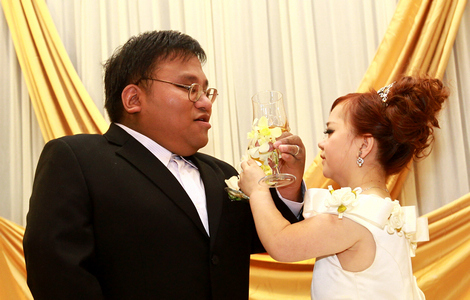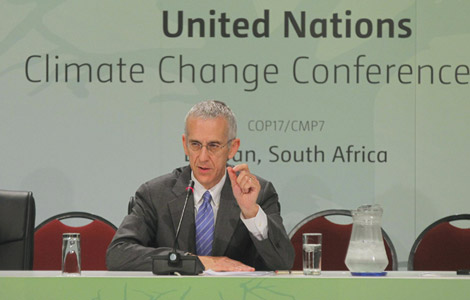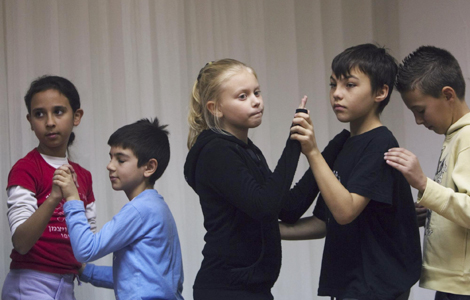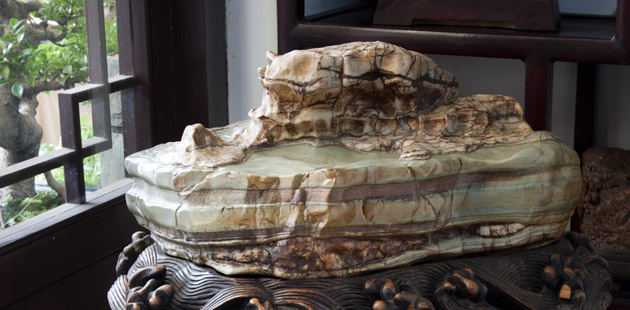Pearl Harbor survivors share stories of attack
Updated: 2011-12-06 06:43
(Agencies)
|
|||||||||||
HONOLULU - Clarence Pfundheller was standing in front of his locker on the USS Maryland when a fellow sailor told him they were being bombed by Japanese planes.
"We never did call him a liar but he could stretch the truth pretty good," Pfundheller said. "But once you seen him, you knew he wasn't lying."
The 21-year-old Iowa native ran up to the deck that Sunday morning to man a five-inch anti-aircraft gun. Seventy years later, he remembers struggling to shoot low-flying Japanese planes as smoke from burning oil billowed through the air.
"This was the worst thing about it - yeah, your eyes - it bothered you. It bothered your throat too, because there was so much of that black smoke rolling around that a lot of times you could hardly see," he said.
Now 91, Pfundheller will be returning to Pearl Harbor on Wednesday for the 70th anniversary ceremony honoring those lost in the Dec 7, 1941 attack that brought the United States into World War II.
Accompanying him will be fellow survivors, other World War II veterans, and a handful of college students eager to hear their stories. The student and veteran group will be among 3,000 people attending a ceremony the Navy and the National Park Service hoist jointly each year at a site overlooking where the USS Arizona sank in the attack.
The College of the Ozarks program aims to preserve the stories of veterans - something that's becoming increasingly urgent for Pearl Harbor survivors as the youngest are in their late 80s.
Pfundheller said he enlisted in the Navy in 1939 because he kept hearing there was going to be a war and he wanted to know what to do when the fighting started. By the time Japanese fighter planes and torpedo bombers invaded the skies above Hawaii, he was well-trained.
Even so, the scene was utterly chaotic.
Commanders hadn't expected Japan to strike from the air, so Pfundheller's anti-aircraft ammunition was locked away in a gun locker. Then, when he gained access to the 3-foot-long, 75-pound shells, Pfundheller said the Japanese planes were flying too close for him to take aim.
"You could see them pumping their fists and laughing at you," he said.
The Maryland's crew scrambled to prevent their battleship from going down with the USS Oklahoma, which rolled over after being hit by multiple torpedoes.
"We had to cut her lines tied up to us because it was pulling us away," he said.
Altogether, 2,390 Americans lost their lives in the attack. Twelve ships sank or were beached, and nine were damaged. The US lost 164 aircraft. On the Japanese side, 64 people died, five ships sank, and 29 planes were destroyed.
After the war, Pfundfeller returned to Iowa where he worked as a district feed salesman and became an elementary school custodian. He now lives in Greenfield just 12 miles from Bridgewater, the town where he was raised.
Many veterans didn't talk much about their experiences after World War II, and Pfundheller's own children didn't hear what he went through until he began sharing his stories at schools and libraries.
"People in the Midwest where I lived - why, you just went back, got your job and went to work and nobody asked anything," he said.
Today, efforts are under way to make sure stories like his are handed down to younger generations.
Pfundheller and four other World War II veterans are traveling to Hawaii with 10 students from the College of the Ozarks, a Christian school in Branson, Mo. After Hawaii, the group will travel to Japan to visit Okinawa, where the US and Japan fought a brutal battle in the last few months of the war, and Hiroshima, where the US dropped the first atomic bomb.
Heather Isringhausen, a 21-year-old senior who will be one of Pfundheller's two student escorts, said she wanted to join the trip in part because she's never been able to get her grandfather to tell her about his experiences serving in World War II.
She wants to know what the veterans were thinking at the time, and what life was like in the 1940s.
"If most of the veterans are anything like my grandpa, they probably haven't talked much about it," Isringhausen said. "Once they're gone, all we'll have left are history books and movies and different tales that people have been told and written down."
Guy Piper, who was brushing his teeth in his barracks on Ford Island when the attack began, said he was honored to go on the trip. He said programs like this make "us older people feel good."
The sailor who served in World War II and the Korean War said he would share with the students his hope that younger generations won't have war.
"When you see young men like I saw on Dec 7 - a bunch of blood - it just stays with you. You can't get rid of it. That's what war is about. Just plain hell," he said. "I'd like people to stop and think about staying away from wars."
Daniel Martinez, the National Park Service's chief historian for Pearl Harbor, said the program fits in with the theme of this year's events: how the legacy of Pearl Harbor will be carried on by future generations. But he lamented more survivors aren't alive to tell their stories.
"It's a little sad because it's coming a little late," he said. "I wish it could have happened at the 50th anniversary when there were so many of them around."
In a reminder of how many are passing on, the ashes of two survivors who died after living until their 90s will be interred within their sunken battleships this week.
Navy and National Park Service divers on Tuesday will lower Lee Soucy's cremated remains into the USS Utah, which rolled over and sank next to Ford Island after being hit by a torpedo. Soucy died last year at the age of 90 in Plainview, Texas. He'll be joining some 50 men who perished when the ship sank and eight survivors whose ashes were interred there after their deaths decades later.
On Wednesday, divers will place Vernon Olsen's ashes in the USS Arizona, where many of the sailors and Marines who served on the ship are still entombed. The Arizona lost 1,117 crew members during the attack. Olsen was one of the 334 who survived. Olsen died in Port Charlotte, Fla. in April at the age of 91.
Dec 7 events in Hawaii this year will feature a parade. Marching bands, military families, and dignitaries are expected to walk along Waikiki's main drag, Kalakaua Avenue. Sen. Daniel Inouye of Hawaii, who received the Medal of Honor for his actions as a soldier in Italy in 1945, will be grand marshal.
Hot Topics
HIV/AIDS, Egypt protest, Thanksgiving, climate change, global economic recovery, home prices, high-speed railways, school bus safety, Libya situation, Weekly photos
Editor's Picks

|

|

|

|

|

|







